Ask the Pros: Macro Part 1
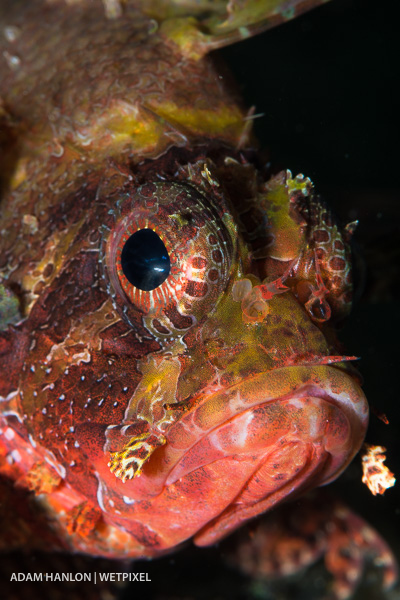
Jean Bruneau
Jean has been shooting underwater since 1989, and has been a technical advisor to the underwater housing manufacturer Aquatica since 1990.
1. What is your favorite macro lens (and why)?
I am shooting a D800 with a Sigma 105mm F2.8 EX DG OS HSM Macro EX in one of our Aquatica AD800 housings these days and have nothing but good things to say about this combination, I still have my old Nikkor AF 105mm f/2.8D, its sharp, but frustratingly slow to focus on too many occasion. I have a Nikkor AF 60mm f/2.8D as well, but it hardly, if ever, goes underwater since I returned to full frame
2. Cropped or full frame camera for macro? I guess this would be if you had the choice of either.
I have shot both format (and still have a D300s kit) admittedly there is more bang for the buck in macro with the DX format, but with the real estate available on the D800 sensor, I just don’t feel the benefit of shooting cropped sensor for macro anymore.
3. Do you use manual or auto focus? If it is the latter, what sort of autofocus mode do you tend to use?
I’m just too vintage to use manual focus anymore (LOL!), instead I shoot AF in S mode and reframe once its lock onto the subject, or for really tiny stuff, I get in the zone using AF, then use the AF Lock rear lever on my housing and just gently rock back and forth and shoot when the eyes are sharp.
4. How do you light your subjects? One strobe/light or two (or more)?
I use a pair of Ikelite DS-160 strobes on 3 section Delta 3 strobe arms that gives me +/- 50cm / 20” of movement, this way, I can shift a strobe to the back and use it either as a background light or to throw a halo of light around the subject. I have a background in studio photography and light placement is paramount for me, a lot of people forget that the closer the lights are to the subject, the softer the light will be. Unfortunately all too often I see direct on the subject lighting, which can be unflattering.
I say, if you want to learn good lighting technique for underwater photography, then find books or tutorial on creative product photography, you will soon appreciate the value of a good set of strobe arms that will allows flexible placement of your strobes.
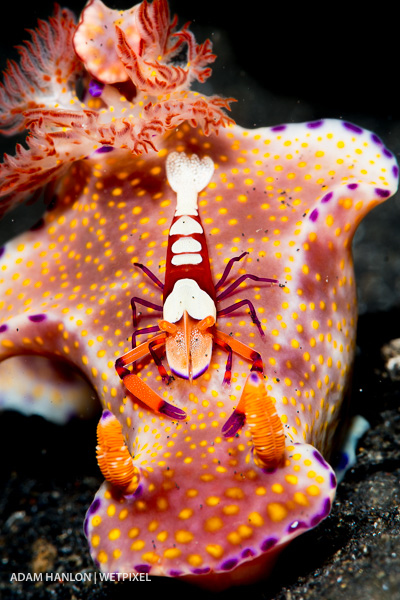
5. Do you use snoots or other devices to control your lighting?
I use a homemade snoot, made of plumbing supplies, it turned out to be the best one I have seen so far, the main nose section is a 3.5” to 2” reducer and it is made modular by using smaller pipe reducer adapters, going all the way to a spot of light no bigger than a dime, longer extension are easy to fabricate using pipe and that gives a sharper beam of light, it cost next to nothing and it is a snug fit on my DS-160, I also recently started using dome diffusers, both the Ikelite and the CM brands and I am really impressed by the soft and diffuse light quality they give. I will be exploring their virtues some more in the near future.
6. Do you prefer a black or colored background? Do you tend to shoot for bokeh-style diffuse soft focus backgrounds?
I would say, it’s a case by case thing, again I go back to having a flexible setup and being able to tailor the light to bring the best out of the situation. Sometime too much depth of field is as bad as not enough. Black can give a dramatic look to a shot, but after a while, it gets long in the tooth, bottom line is, if the background brings something positive to the scene, such as the particularity of the habitat, then it should be included, if it distracts the viewer, then throw it out of focus, or cut off its luminous influence all together.
7. What is your favorite macro subject? Any tips on the best way to shoot them?
I’m partial to Blennies, these little bugger have tons of personality, and can be quite challenging to shoot. I favor facial expression type of images, but nudibranchs are also a favorite subjects. Be a good diver by being aware of your surrounding and master your buoyancy, you should know where your head is, but it also goes for your fins, if you plan on shooting wet diopters then be mindful not to rub the reef, stick to the dive guide, they know were the stuff is. Me, I can’t find that minuscule stuff by myself most of the time. Make your rig as neutral as possible by adding buoyancy compensation devices to it, believe me, it makes a big difference in your stability and composition.
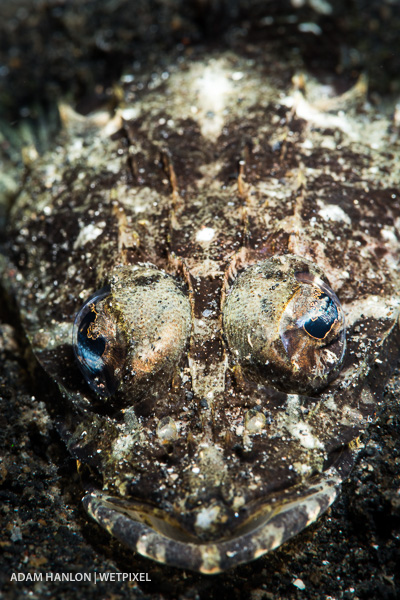
8. If macro tends to be a technical discipline, how do you shoot also shot creatively? What makes for a unique macro image/video?
Again, I would go back to the product studio environment as a reference, since both have similarities by relying mostly on creative artificial lighting for bringing out the features of the subjects. Obliviously, there is composition involved, and I believe that we have to be visually artistic, but we cannot forego the technical aspect of the craft. Learn the technique of lighting, and photography as much as you can so that it becomes second natures and then you can stop thinking about it, and concentrate on the visual aspect of your images. Same goes for music and other art forms, when you play a song, if you have to constantly look at where you are putting your finger on the keyboard, then you are not really there yet!
A good way to learn good lighting techniques for macro situation is to start doing table top photography at home. Play with your lighting, use different lighting technique, change the distance between the light source and the subjects, read up on table top and product photography techniques and bring it underwater.
9. Do you manage to sell any macro images or footage?
I haven’t been on the selling market for a while now and mostly shoot content for workshops and for Aquatica. I find that macro images are more subject oriented and have a bigger visual impact than wide angle images which are generally mood oriented. Thus wide shots tends to be favored as they sets an ambiance, whereas a macro shot is often considered a piece of the puzzle, a part of a larger picture that need to be accompanied by a wider view for putting it in context.
I also find that as underwater photographer, we often tend to have tunnel vision, we know the difficulty in getting certain type of shots and tend to add value to the technical prowess used to get it, while an un-initiated viewer really don’t give a flying hoot on the merits of the technique and will concentrate on the subjects representation and visual impact, so think twice before selecting your work for an exhibition. Most viewer will not be divers, let alone underwater photographers. So go for visual content and balance your macro work with context images.
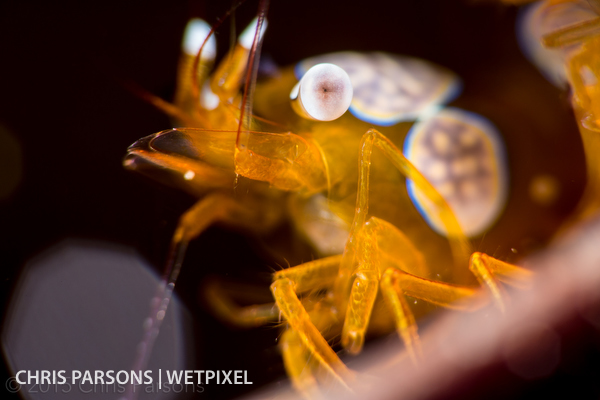
Chris Parsons
Chris is an underwater photographer residing in Fort Lauderdale, FL. His images have been published in major magazines worldwide. He also works for Nauticam USA.
1. What is your favorite macro lens (and why)?
The Canon 100mm f/2.8L + Nauticam SMC (+ SMC Multiplier). The “new” 100mm Canon is a great macro lens. It’s very sharp, and when combined with newer Canons like the 5D Mark III or 7D Mark II, the autofocus is blazingly fast and accurate. I get to shoot a lot of different cameras and lenses in my job, so have a lot to compare to.
The SMC is the wet closeup lens I wanted for a long time. It is powerful yet sharp, and the distortion and aberrations are minimal. The lack of distortion at open apertures (the camera uses an open aperture to focus) means that it is easier to find the subject and make focusing easier. Of course I have some bias here, but this lens really does rise above that.
The SMC Multiplier is quite challenging, and I only recommend it for people who have the SMC figured out and want more magnification. It is really hard to light properly, and the working distance and depth of field are both tiny. But it is fun to shoot; you just need a whole lot of patience and a palette of cuss words at the ready.
2. Cropped or full frame camera for macro? I guess this would be if you had the choice of either.
I shoot both. Cropped is easier in the sense that you get more depth of field for a given framing and the net reproduction is greater at 1:1. APS-C is the sweet spot for shooting macro, in my opinion. Full frame is useful too, though, and if a shallow depth of field look is your goal, full frame makes that a bit easier.
One thing that gets missed:: it is very tempting to use apertures greater than, say, f/22, to try to get more depth of field. But I recommend not doing that, i.e. stay at around f/18 or less. The reason is that when the aperture gets so small, you get a diffraction error that causes the image to be less sharp over the entire frame. This is not some theoretical exercise; you can easily see this for yourself if you do a quick test.
And don’t forget about m4/3. I do have an SLR bias, but there are a lot of people shooting the m4/3 cameras these days. The smaller m4/3 sensor size means a bit more depth of field for a given framing, and you get a smaller subject filling the frame for the same reproduction ratio. Using the Olympus 60mm macro lens and the Nauticam CMC, the net reproduction is amazing.
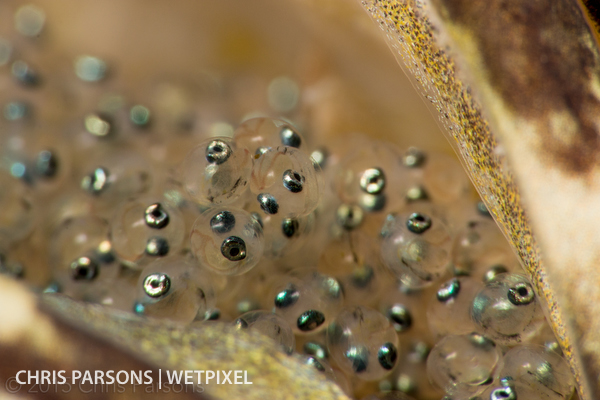
3. Do you use manual or auto focus? If it is the latter, what sort of autofocus mode do you tend to use?
Both. For autofocus I tend to use several techniques. I usually go for a single focus point and move it according to the composition I am looking for. I use “thumb focus, where the camera only autofocuses when the AF-ON button is pressed. This lets me control exactly when the camera focuses, and it won’t go hunting when I half-press the shutter. Often, I will do fine tuning with manual focus. Sometimes it works the other way; I’ll get the lens close using manual focus and then use autofocus to respond as the subject moves (or I move, e.g. surge).
Lately I’ve also experimented with focus tracking on some very small subjects that move in a small area. It’s pretty cool to watch a tiny little fish or shrimp get tracked across the focus points like a bird.
For macro video, I still use thumb focus and pre-set the focus distance for a given shot. The new Canon dual pixel autofocus works well underwater and makes it so you can smoothly change the focus (i.e. pull focus) during a shot.
4. How do you light your subjects? One strobe/light or two (or more)?
Two strobes, and sometimes a third, but almost never used to light the scene evenly. Lighting substantially determines the look of the image, so usage varies a lot. If I want a lot of shadow and light from a single direction, I’ll use a single strobe. But I always carry at least two. The third tends to be setup for backlighting or as a snoot and not attached to the housing. I like the Inon Z-240 for this purpose, as the external slave sensor makes it easy to use as an off-board light.
For video, it’s pretty similar. Two video lights usually and often a third for backlighting or snooting.
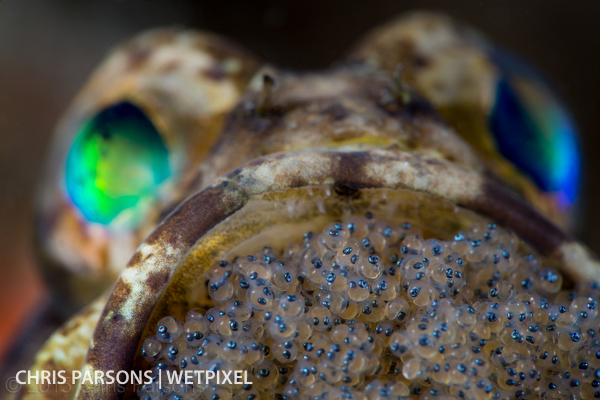
5. Do you use snoots or other devices to control your lighting?
Occasionally. I have a couple of homemade snoots. But my favorite way of narrowing the beam is just holding my hand over part of the strobe. Easier than a snoot device and I always have it with me (hopefully).
6. Do you prefer a black or colored background? Do you tend to shoot for bokeh-style diffuse soft focus backgrounds?
All of the above. This is definitely a big part of u/w macro photography. I think each shot deserves thought about the background. I like some black background shots, and often get asked by people how to achieve this. For my own work I do want a variety though and enjoy experimenting.
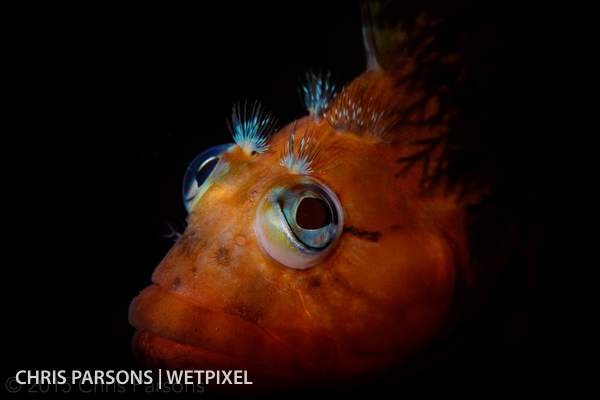
7. What is your favorite macro subject? Any tips on the best way to shoot them?
It’s hard to pick a single one; I am guessing I have a hundred favorites. If I have to pick just one, it would be the jawfish with eggs. It’s a challenging shot in a lot of ways, but I think it a great behavior shot and can also be very beautiful. Thinking about this though, there are so many other great macro subjects: pygmy seahorses, hairy shrimp, blue ring octopus. I could name a lot. One of my other favorites that is probably pretty pedestrian for most people is the secretary blenny. Their expressions are so funny; I’ve definitely laughed out loud underwater after seeing it on my LCD.
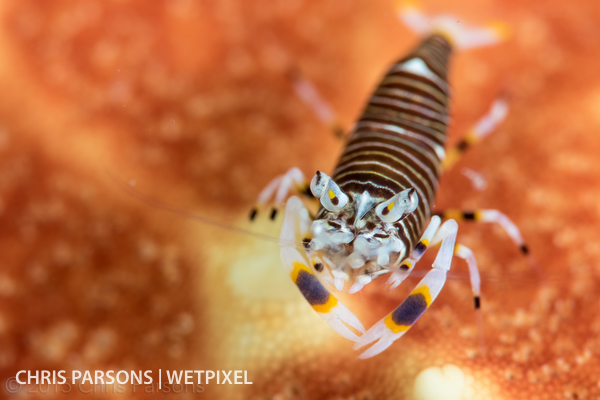
8. If macro tends to be a technical discipline, how do you shoot also shot creatively? What makes for a unique macro image/video?
Macro has a lot of room for creativity. The biggest thing is lighting; there are so many ways to light a given macro shot. With wide angle, we tend to light for even coverage and a natural look. But with macro, it is all about the shadows, the angle of incidence of the light, subject transparency, and so much more. It’s not an easy thing to quantify either; there are so many variables. The other main creativity tool is the depth of field. I like to think about using the depth of field to help guide the viewers eyes and tell the story of that shot.
9. Do you manage to sell any macro images or footage?
Yes, though it is harder than wide angle for sure. BTW, dive magazines seem to prefer blue water backgrounds over black.
Page 1: Imran Ahmad, Allison Vitsky Sallmon and Andy Sallmon, Steve Jones.
Page 2: Douglas Seifert and David Fleetham.
Page 3: Kevin Palmer, Rico Besserdich.
Page 4: Jean Bruneau, Chris Parsons.